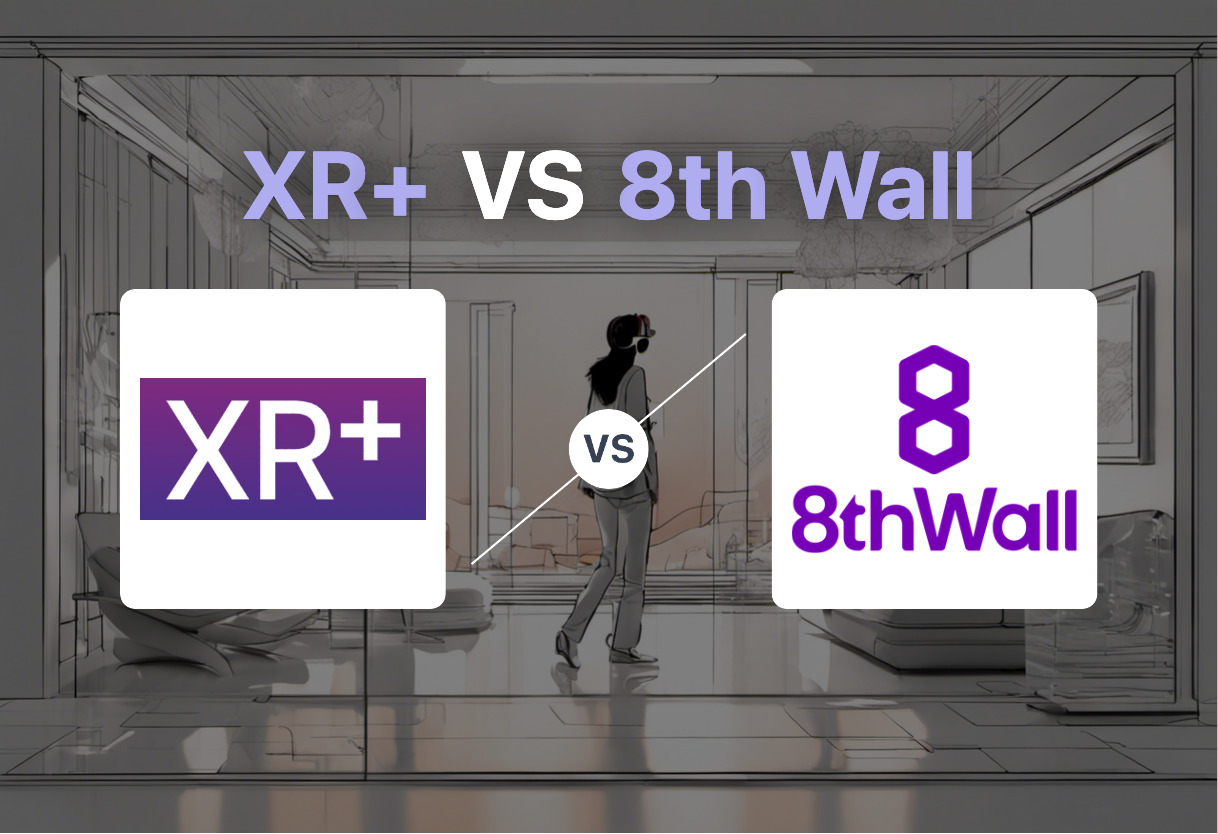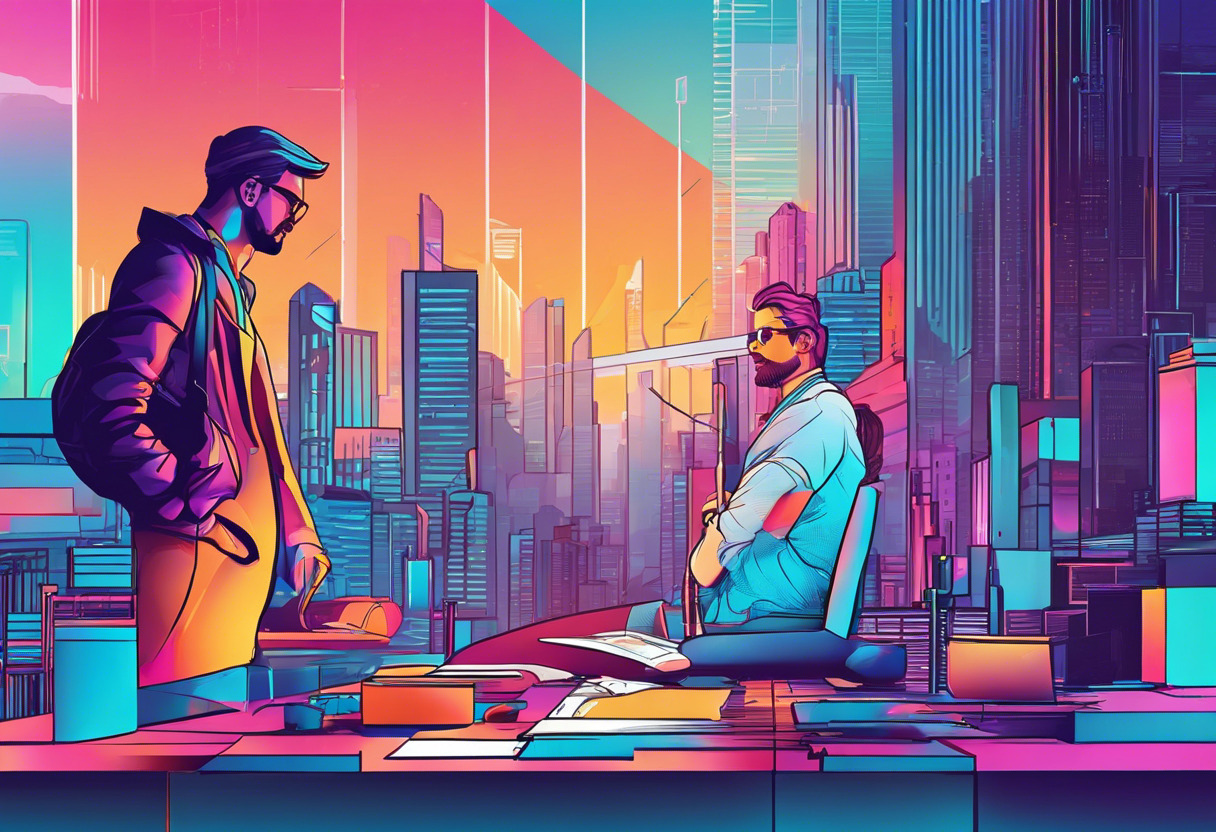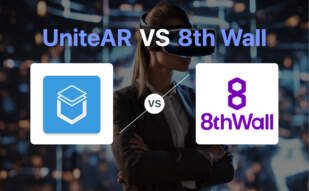For advanced storytelling in various sectors, with inclusivity and eco-responsibility, choose XR+. Aimed at non-coders, it also allows custom development for complex experiences. For developers desiring precise and interactive WebAR, 8th Wall is the ideal pick, renowned for its innovative tools and robust AR engine.

Key differences between XR+ and 8th Wall
- Customer Focus: XR+ targets non-coders and marketers, 8th Wall focuses on developers and tech-savvy users.
- Toolsets: XR+ offers no-code tools, while 8th Wall provides developer-focused tools like the AR Engine and Cloud Editor.
- Compatibility: XR+ ensures device-agnostic deployment options, whereas 8th Wall relies on WebAR technology alone.
- Pricing: XR+ offers tiered pricing with varying features, while 8th Wall has a higher cost for a commercial license.
- Content Creation: XR+ uses images, videos, text, 3D models; 8th Wall requires understanding of web technologies.
- Innovation: 8th Wall introduced hand tracking and “Human AR”, XR+ focuses on immersive, geolocated narratives.
| Comparison | XR+ | 8th Wall |
|---|---|---|
| Objective | Web AR/VR/Metaverse with geolocatable storytelling. | Augmented reality accessible to everyone via web-based AR. |
| Key Sectors | Tourism, heritage, art, culture, events, festivals, live shows, marketing, communication, entertainment, immersive games, commerce, services, education. | Varies with top-tier brands across multiple sectors. |
| User Base | 3 billion across different devices. | Over 5 billion smartphones across iOS, Android, AR/VR headsets. |
| Accessibility and Inclusivity | Features for disabled users. Eco-friendly approach. | WebAR can be experienced on any smartphone. |
| Creation Tools | No-code tools using images, videos, text, 3D models. | 8th Wall AR Engine, Cloud Editor for development, distribution, and discovery of WebAR content. |
| Custom Development | API integration for creating complex AR experiences. | Extensive knowledge of JavaScript, WebGL, HTML5 required for AR experiences creation. |
| Promotion Channels | QR codes, webAR players, social media. | WebAR via SLAM system, Face Effects, sky segmentation. AR QR Code approach for AR content anchoring and access. |
| Partnerships | Collaboration with popular brands for engaging AR experiences. | Acquired by Niantic in March 2022. |
| Pricing | Varied based on type of web app: free, advanced, super XR. | Higher cost for commercial license exceeding 2000 USD per month. Though, AR Code has included commercial license in it’s cost-effective pricing model. |
| Enhancements and Features | AI for video creation. Offers realtime big data visualization with VR/AR through MDACA XR+. | Features include AR Code for varied AR experiences. WebAR used for placing virtual objects. Presence of “Human AR” to augment humans appearances. |
What Is XR+ and Who’s It For?
XR+ is a trailblazing technology company that revolutionizes the use of Augmented Reality (AR) and Virtual Reality (VR) in storytelling. Harnessing the power of these advanced tools, XR+ pioneers immersive, geolocatable narratives in sectors ranging from tourism and heritage to communication, entertainment, services and education. It’s a game-changer for professionals looking to leverage AR/VR tech to propel their businesses or artistic ventures into the metaverse.

Pros of XR+
- Wide range of application areas
- Inclusive features for users with disabilities
- Offers quick results with no need for developers
- Employs AI for automated video creation
- Provision of free and advanced XR web apps
Cons of XR+
- May have a steep learning curve for certain users
- Limited custom development
What Is 8th Wall and Who’s It For?
8th Wall, founded in Palo Alto, California, is an award-winning AR developer platform with a vision to make augmented reality accessible to all. Powered by a unique computer vision technology stack, 8th Wall creates immersive web-based augmented reality (WebAR) experiences that can be accessed from any smartphone, without the need for an app. It’s suitable for AR developers and businesses seeking to leverage WebAR technologies to create compelling brand experiences.

Pros of 8th Wall
- Accessible by over 5 billion smartphones
- Introduction of hand tracking for full interactivity
- Founded by industry veteran with expertise in computer vision
- Powerful tools for WebAR and WebVR development
- Affordable commercial license options
Cons of 8th Wall
- High learning curve due to developer-focused tools
- Does not extend support to AR headsets like Apple Vision Pro
- Higher cost for commercial license exceeding 2000 USD per month
XR+ vs 8th Wall: Pricing
While XR+ offers a tiered pricing model including a free variant, 8th Wall can carry a significant cost for a commercial license, surpassing 2000 USD per month.
XR+
XR+ offers three tiers of their web app: free, advanced, and super. Each tier comes equipped with varying features such as AR/VR/Metaverse, cross-device access, branding options, and limitations on assets. Other factors include levels of multitrackers, analytics, and support. The use of a tiered pricing model offers flexibility to users with different needs and budget constraints – from hobbyists exploring AR/VR to businesses looking for robust, advanced solutions.
8th Wall
8th Wall uses a significantly different pricing model. For commercial use, the license reportedly exceeds a monthly cost of 2000 USD. This hints at a potential higher entry barrier for businesses looking to make full use of 8th Wall’s WebAR technology, especially contrasted with the free-to-start model of XR+. 8th Wall’s pricing aligns more with its advanced toolsets and solutions, symbolizing a focus on providing professional, premium AR experiences. This could limit its appeal to smaller ventures or hobbyists with less to invest.
XR+ or 8th Wall: The Expert’s Verdict Revealed
Picking a champion between XR+ and 8th Wall is complex. However, the verdict depends on your persona and requirements.
Developers & Tech Enthusiasts
If the thrill of coding excites you, 8th Wall is your match. It boasts powerful tools such as the 8th Wall AR Engine and Cloud Editor, demanding a familiarity with JavaScript, WebGL, HTML5. However, if you yearn for a no-code environment, XR+has got your back.

ARTech Adopters & Implementators
Seeking AR for a varied application range -you need XR+. Its versatility ranges from tourism and education to marketing and entertainment. However, if accuracy and a seamless WebAR experience via SLAM technology is your endgame -choose 8th Wall.
AR/VR Marketers
For marketers utilizing AR/VR, 8th Wallprovides a solid platform with a proven track record for top-tier brands. Conversely, XR+allows for creative content creation using images, videos, text, and 3D models with dynamic QR code capabilities.

Choosing between XR+ and 8th Wall depends significantly on your goals and technical skills. Professionals seeking a no-code, diverse application platform will prefer XR+, while developers desiring a deep dive into coding and precision should opt for 8th Wall.
Hannah Stewart
Content writer @ Aircada, tech enthusiast, metaverse explorer, and coffee addict. Weaving stories in digital realms.





